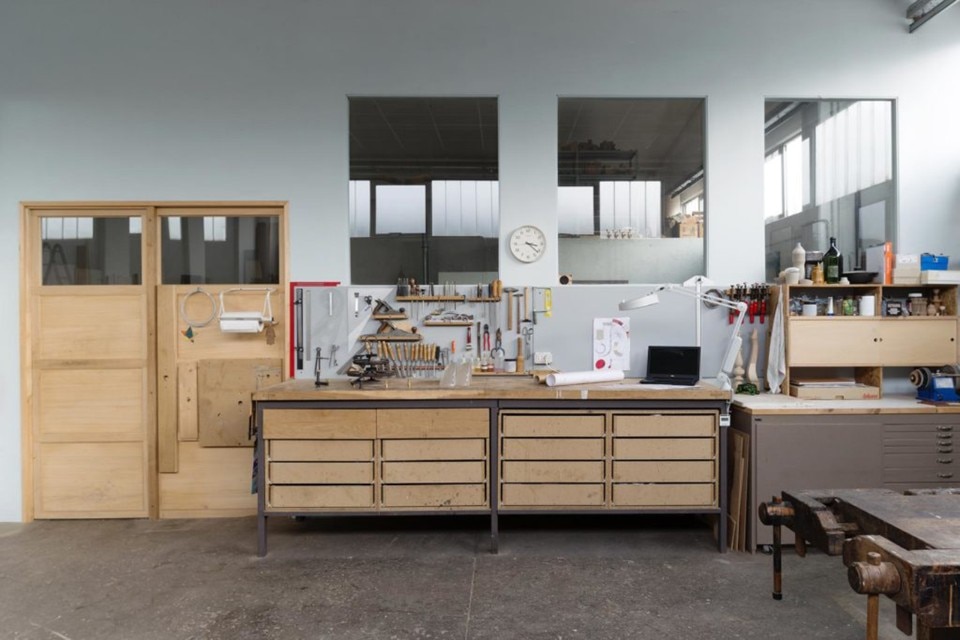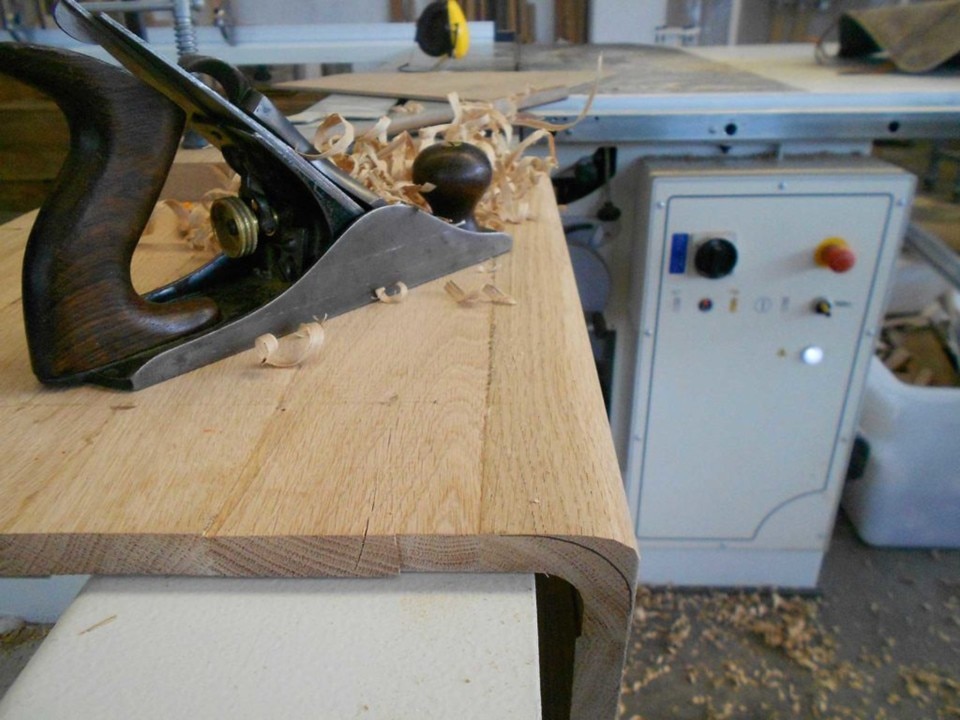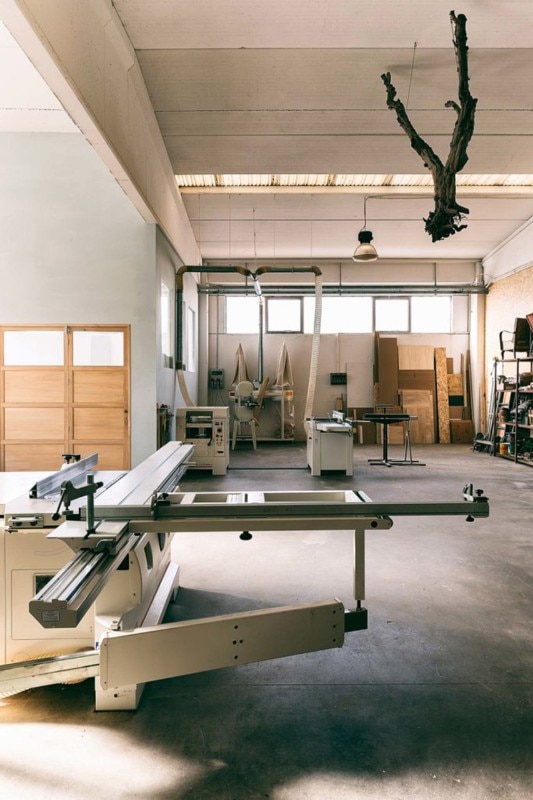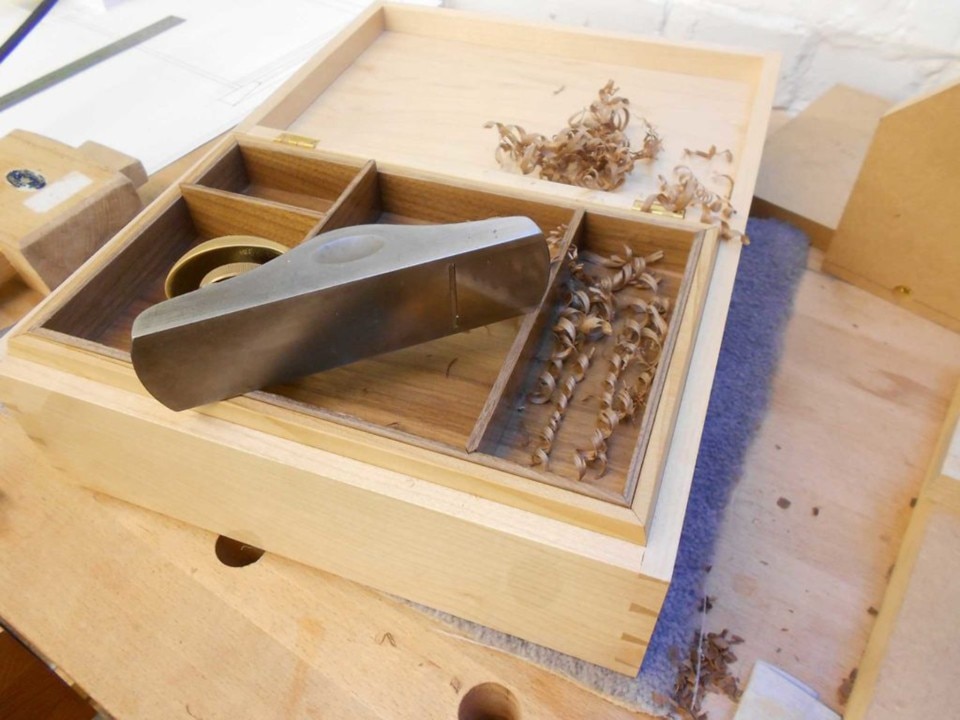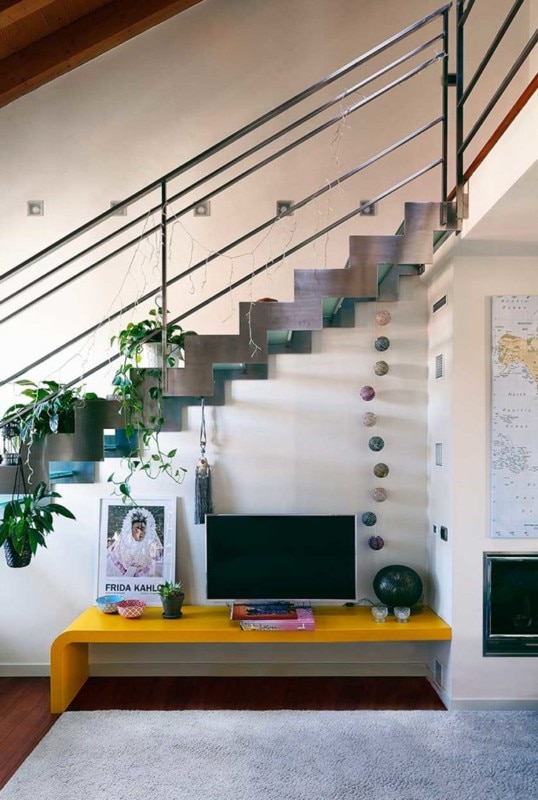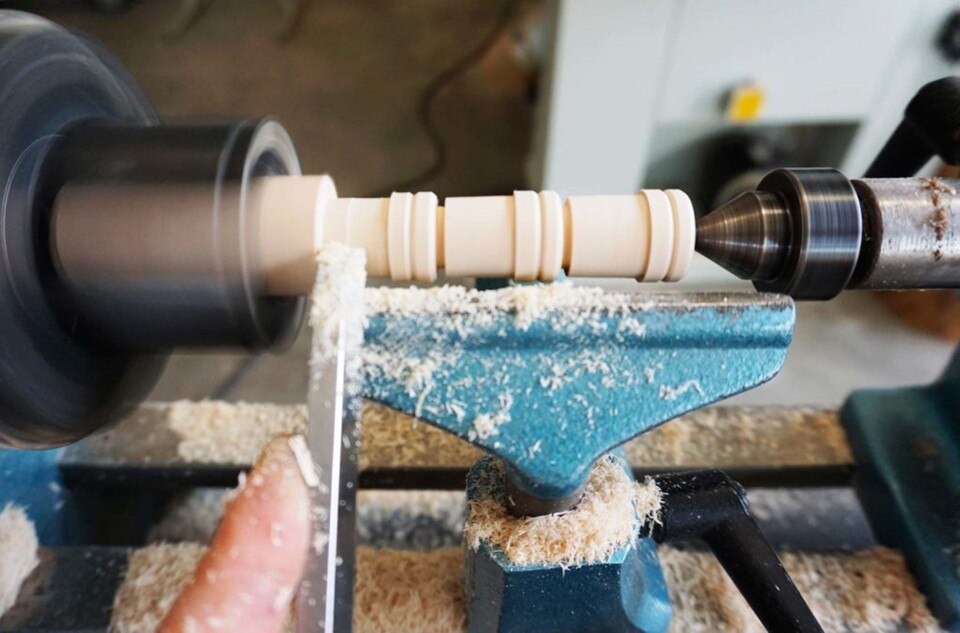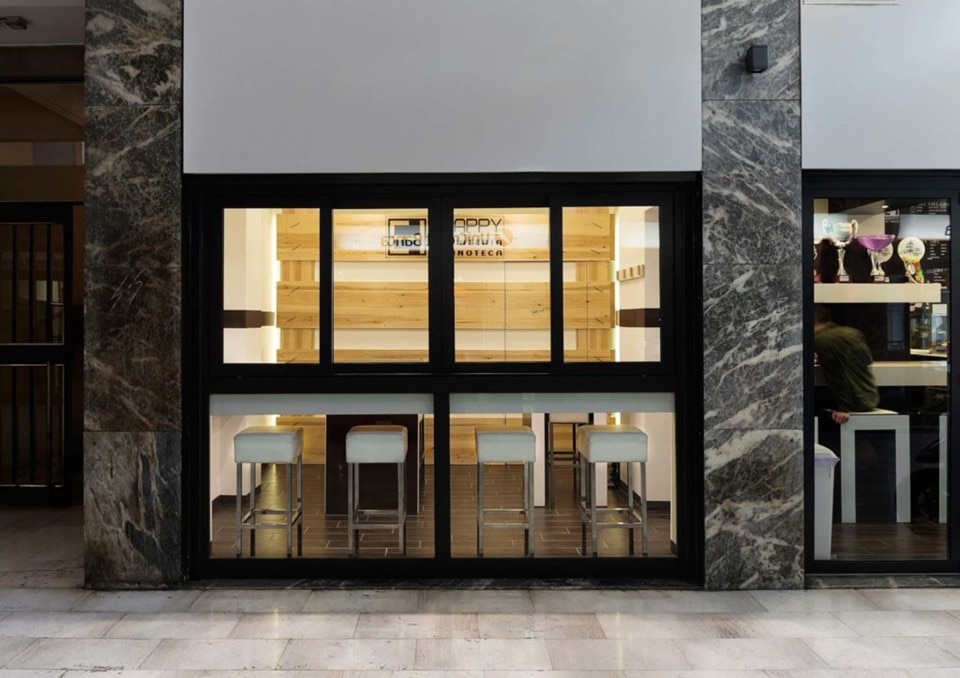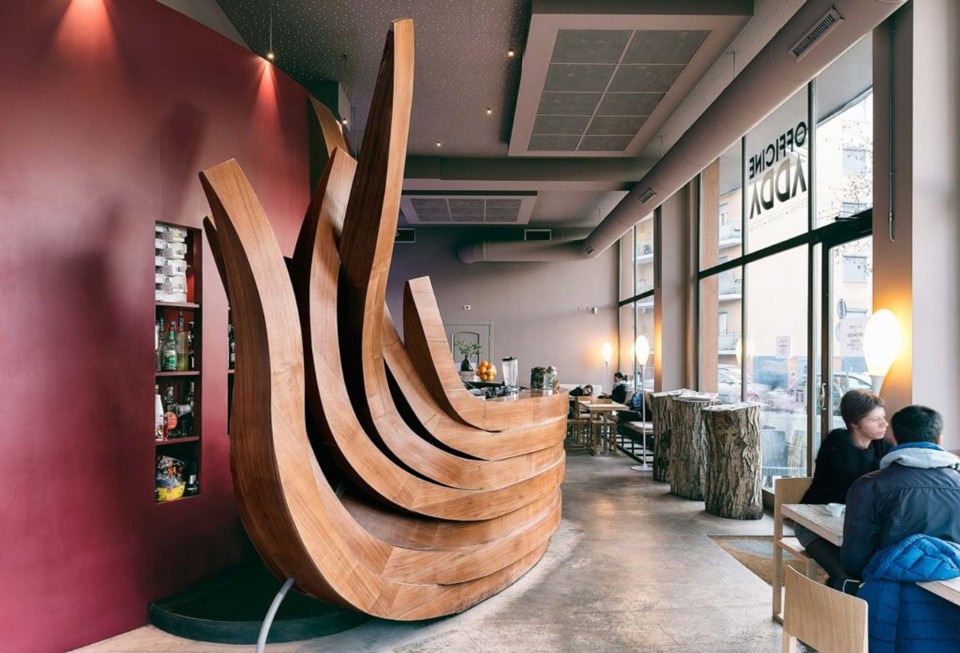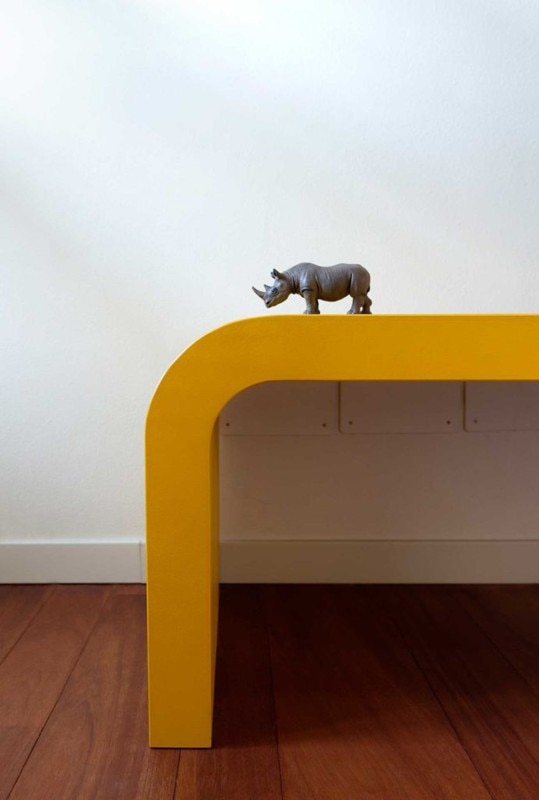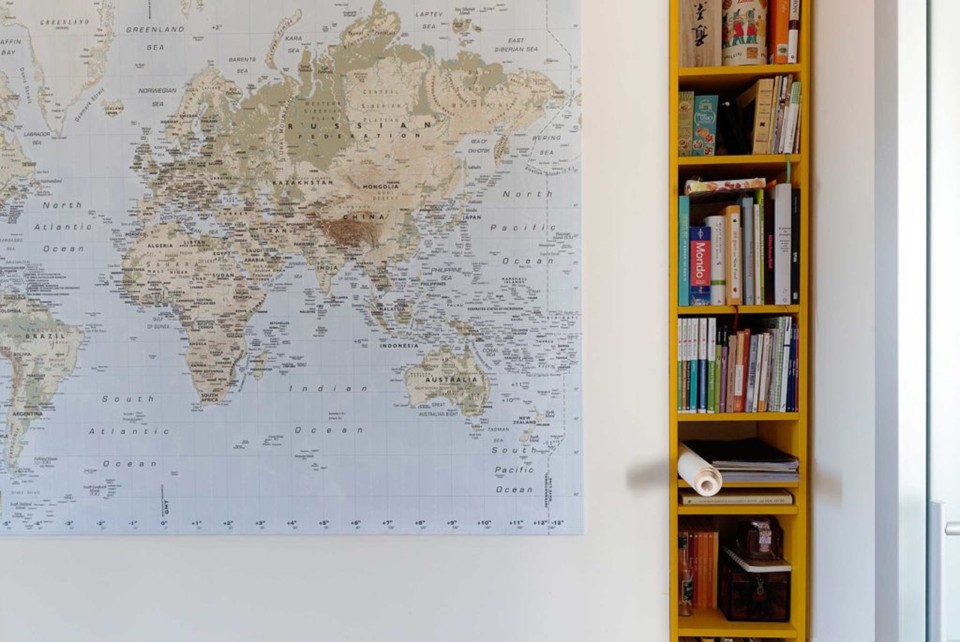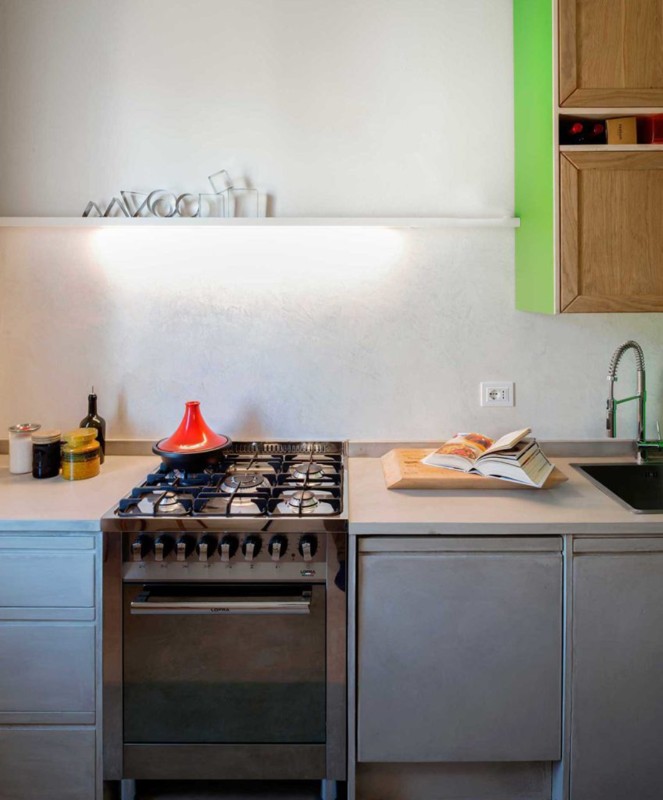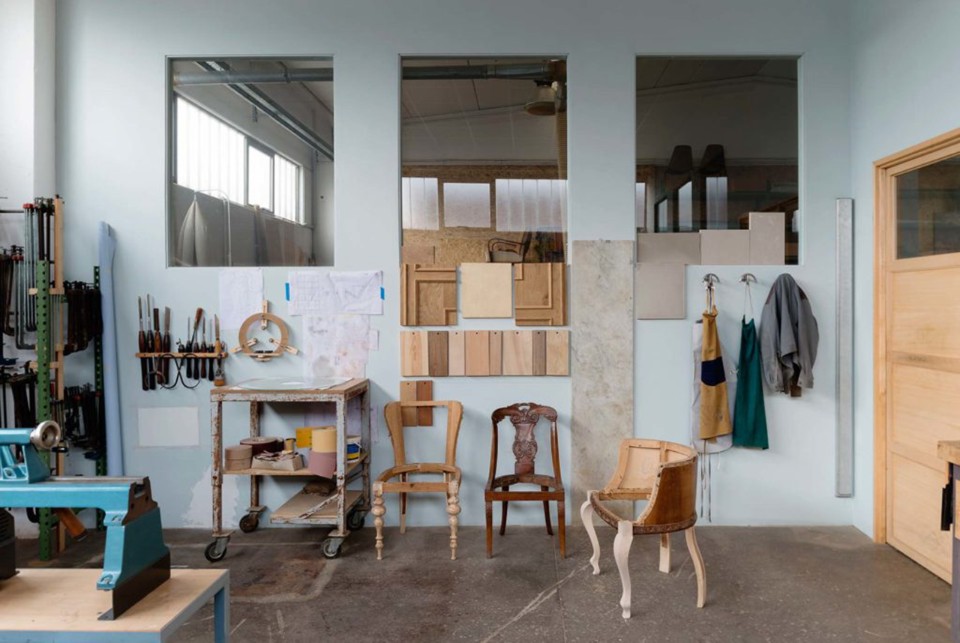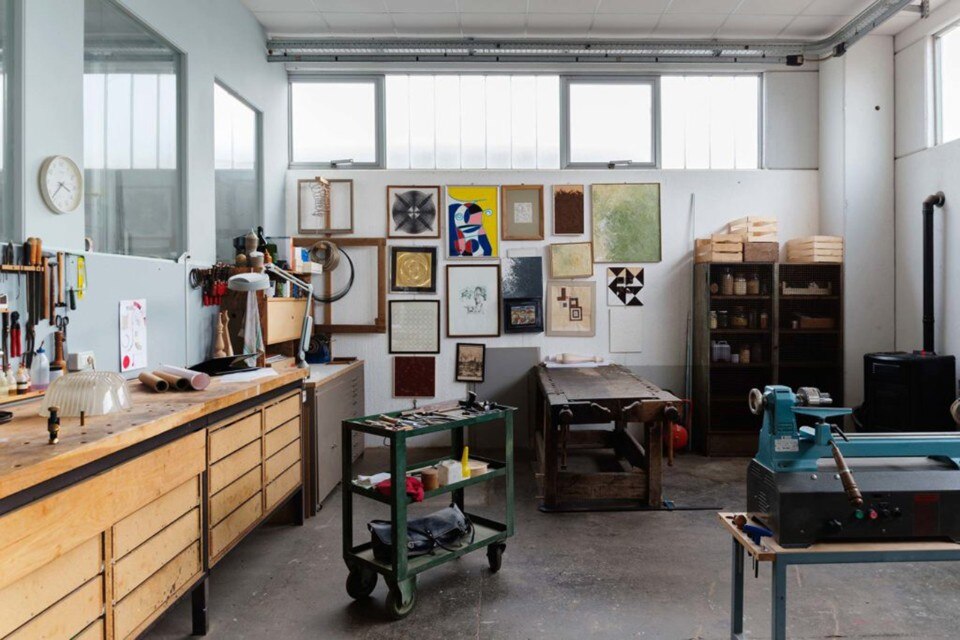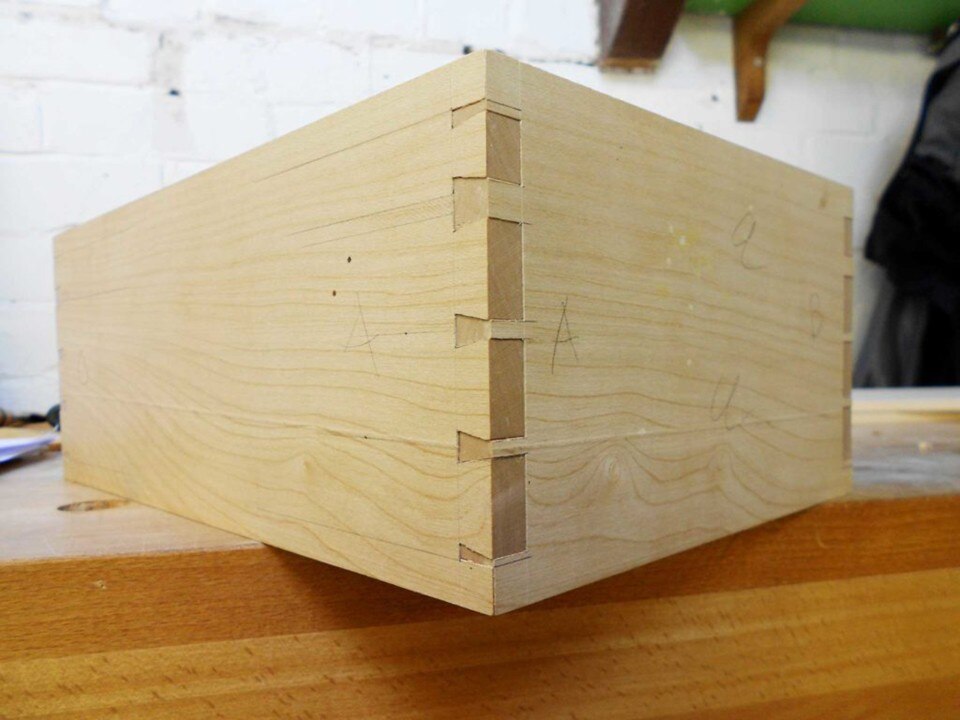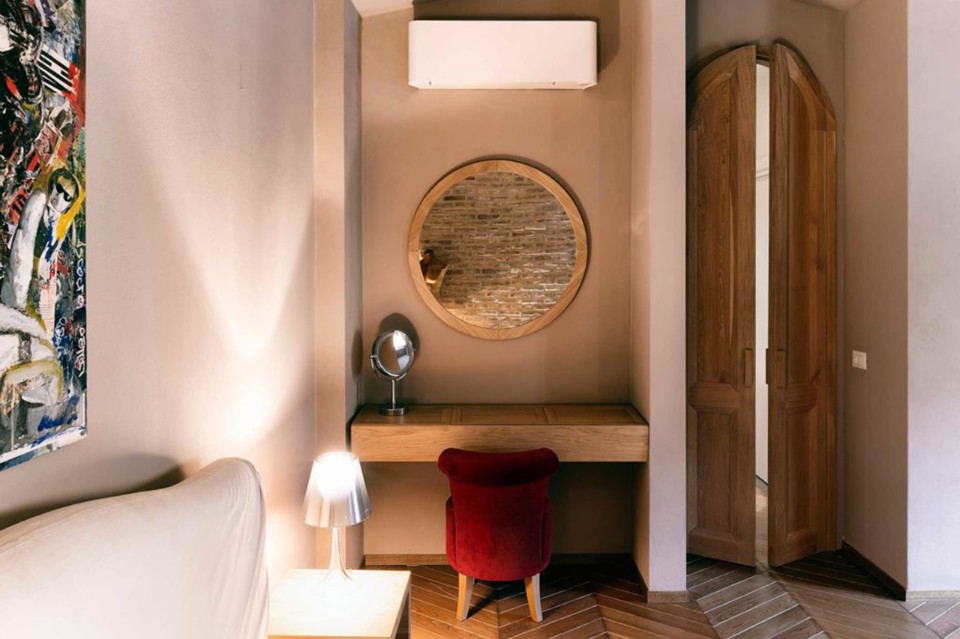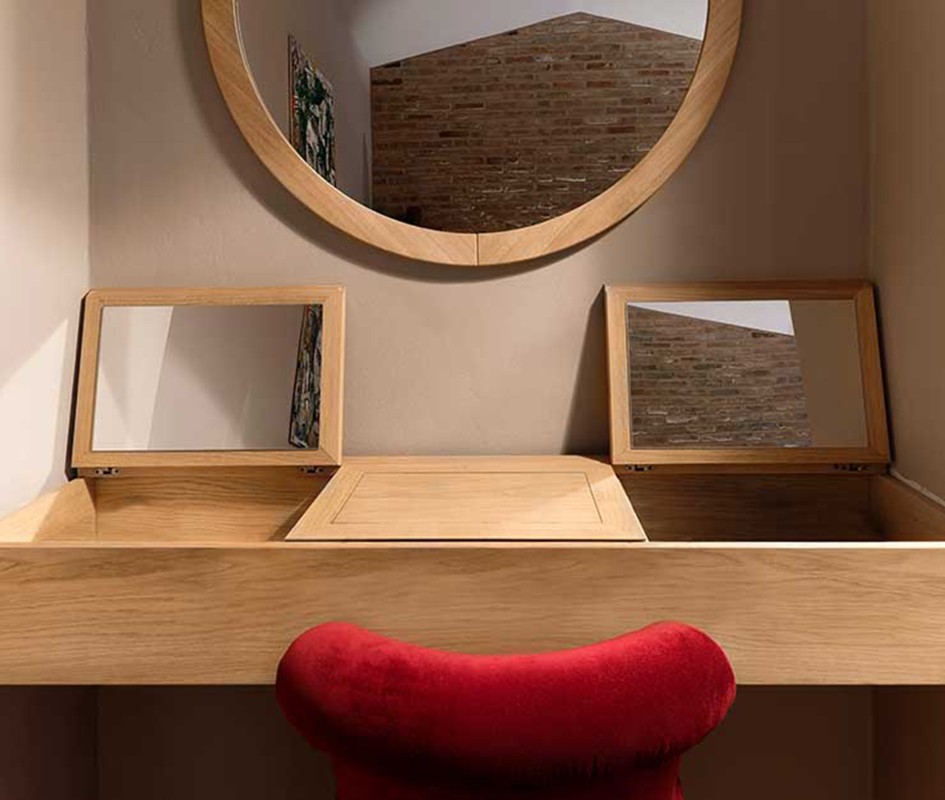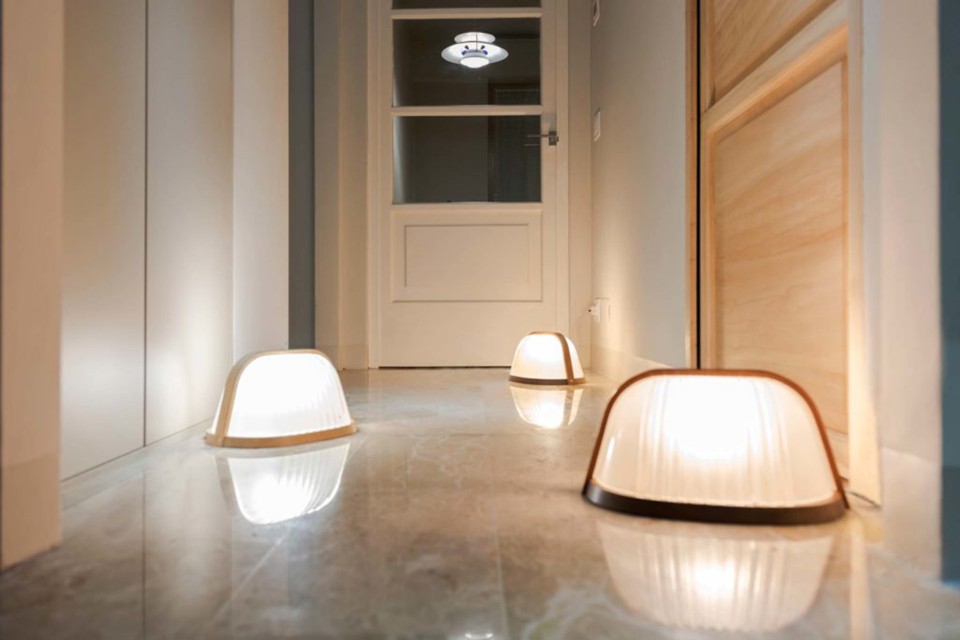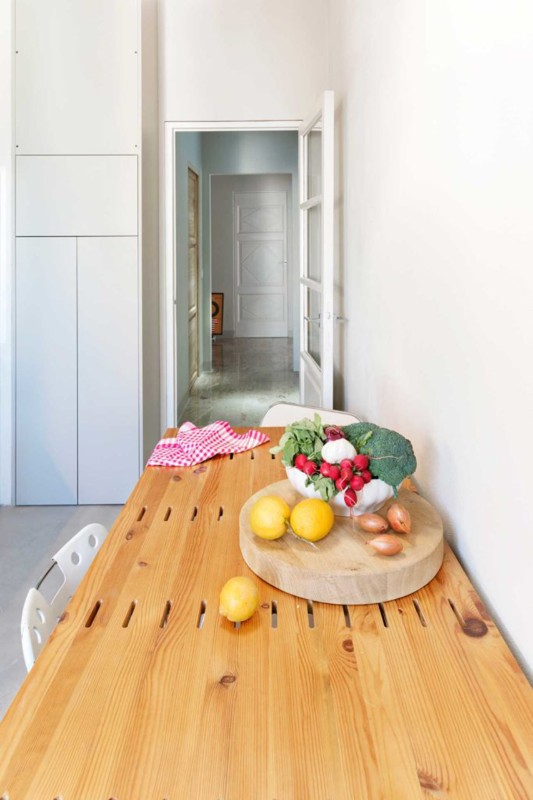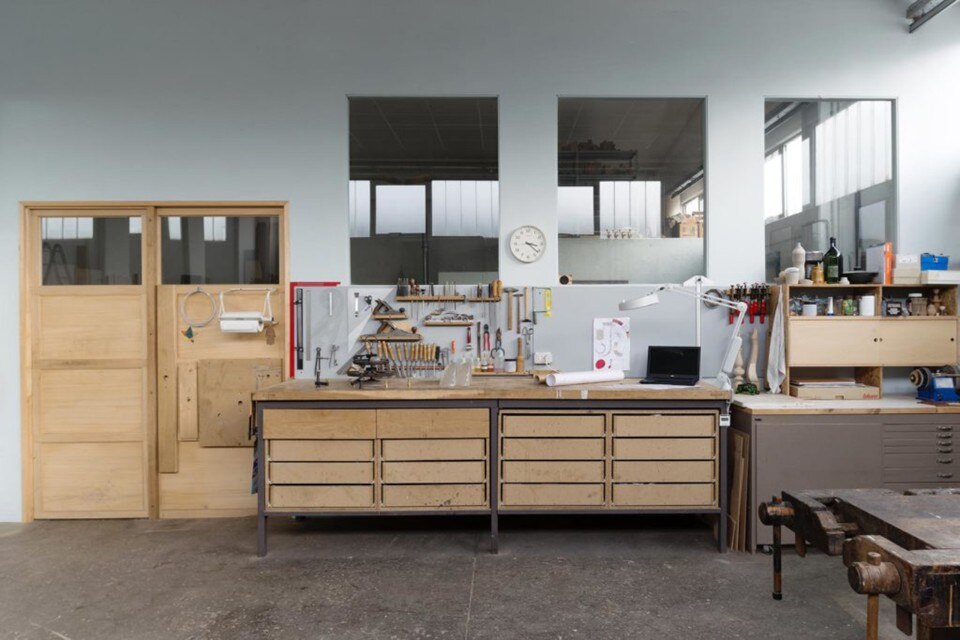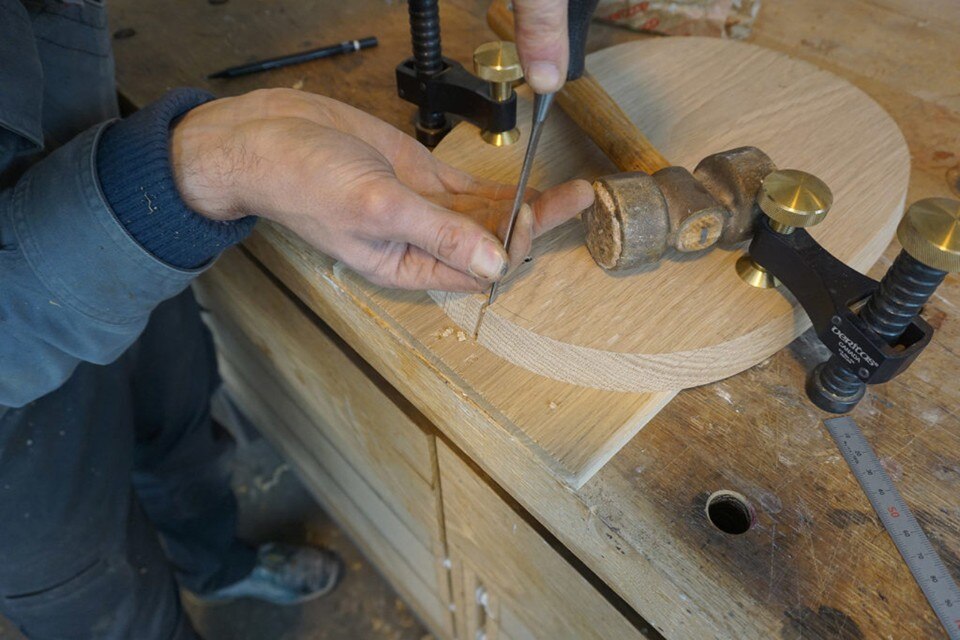“Dust isn’t good in a carpenter’s workshop. Cleanliness and order are what you need.” Manuel Guerci, fine woodworker by vocation and training, debunks (or almost) the stereotypes of a craftsman. He’s not hunched over, he’s not curmudgeonly and there are no wood shavings in his hair. He’s opened an obsessively tidy workshop in the Cremona countryside named after the symbol he chose for it – the Wedge Lab. He’s a hybrid figure: in today’s post-industrial era, you might call him a neo-craftsman or a craftsman 4.0. He’s versed in eighteenth-century marquetry techniques and blends animal glue and chalk – one of the oldest of preparations – to finish doors and windows. But he pairs these with modern materials, such as Formica and plastic, and uses laminated wood to include curves in his designs. He’s got wifi in his lab and does research on the web, but he also wanders around flea markets hunting out old light fixtures and bits of glass to re-use and restore. There are boards piled up, along with trade magazines and cult books (Alberto Burri’s anthologies and Richard Sennett’s The Craftsman).
What characterises – or should – the contemporary craftsman in a world with 4.0 technology and cutting-edge design?
There’s definitely a romantic side to our image of the craftsman. The passion for doing the work well is a fundamental characteristic of the vocation, but the use of high-quality materials, skill and keeping your technical ability up to date also come into it.
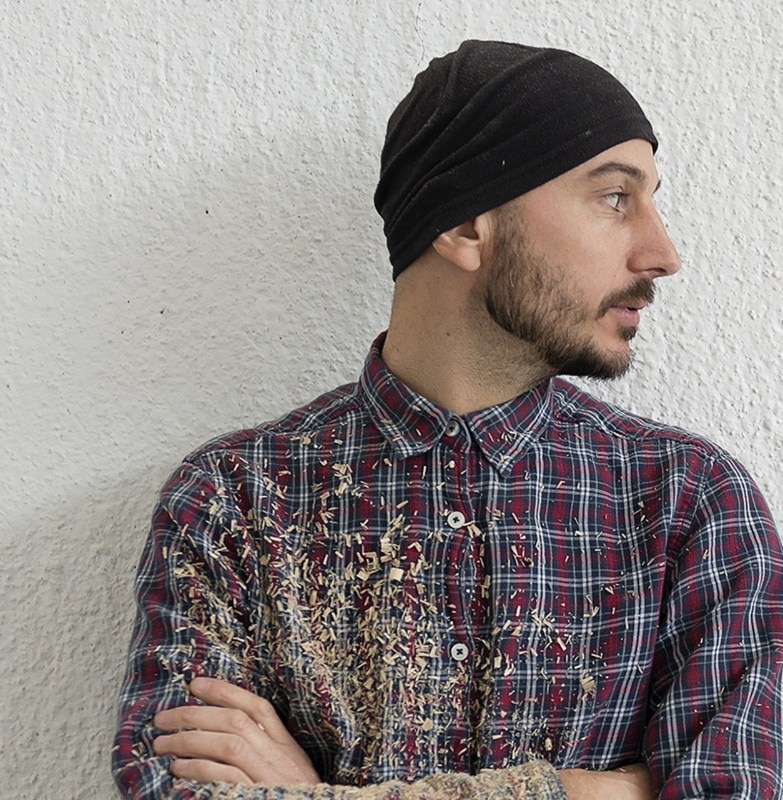
How would you define yourself?
As a craftsman with a creative imagination, someone for whom blending materials is fundamental. As someone who uses old techniques to design usable contemporary pieces. The difference between a craftsman from the past and one from today perhaps lies in this adaptation. An almost obligatory component is cultural development, the deepening of your theoretical and practical knowledge. Then to be a 360° professional, you need to be able to operate in the spheres of finance, marketing and graphic design too.
In a high-tech age, where machines rule, skill with your hands seems like a kind of gift.
We should make a distinction here: you need commitment and practice to attain craftsmanship. In works from the past, the emphasis was on the person who designed them, not on the person who actually realised that design with their hands. Today someone with that level of manual ability would be seen as an artist. With his marble-working skills, a stonemason who worked on Milan Cathedral would be a great artist today. In the past, you were apprenticed to a workshop at the age of eight. You learnt all the secrets and you were bound to become – partly by imitation – an excellent craftsman.
I am a craftsman with a creative imagination, someone for whom blending materials is fundamental. Someone who uses old techniques to design usable contemporary pieces. The difference between a craftsman from the past and one from today perhaps lies in this adaptation.
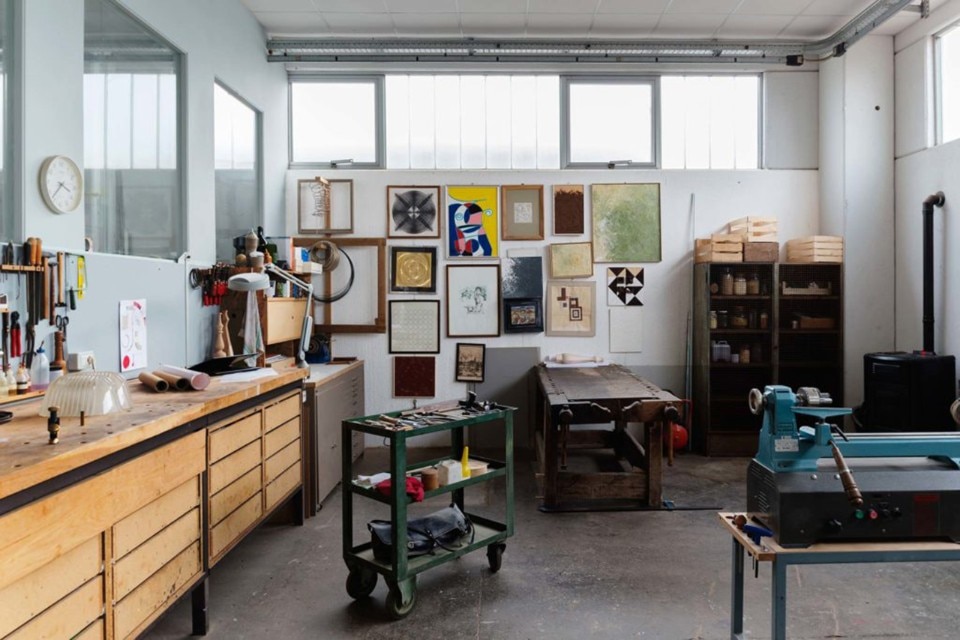
The symbol of your Wedge Lab workshop is just that, a wedge – solid, simple, a useful tool. What kind of work do you do there?
In the workshop, I do woodwork, restoration, reinterpretation – all of which are interconnected. Almost always everything rotates around wood and my training as a restorer, as someone who then became passionate about carpentry and design. I move from the use of latest generation polyurethane varnishes to applying casein. I think this – the dialogue between restoration, design and re-use – is the most distinctive feature of the workshop.
How were you trained? And how did you come to set up your own workshop?
I went to a secondary school specialising in art, and then to an institute in Piacenza (now closed) that engaged international experts, such as a craftsman from Versailles who taught me eighteenth-century gilding technique or a wood engraver from Trieste who worked with theatres and built scaffolding. I had no idea what restoration was. But I learnt that I’d like to do work with my hands. Wood – starting right from the tree – was a material that fascinating me. But it was only by working with them that I came to understand the differences between the materials. I learnt to recognise the hardness of oak.
How do you train a craftsman?
Through professional training, certainly. But you have to train the person too, through the richness of the sector – exhibitions, travel, relationships with other people, suppliers and master craftsmen.
You knew Ghianda, one of the greatest of fine woodworkers, who passed away a few years ago.
A craftsman is also trained through meeting extraordinary individuals, who represent models to aim at. I have to add that the popular image of the craftsman grated on him too. He was an elegant man with well-cared-for hands, an aristocrat of wood.
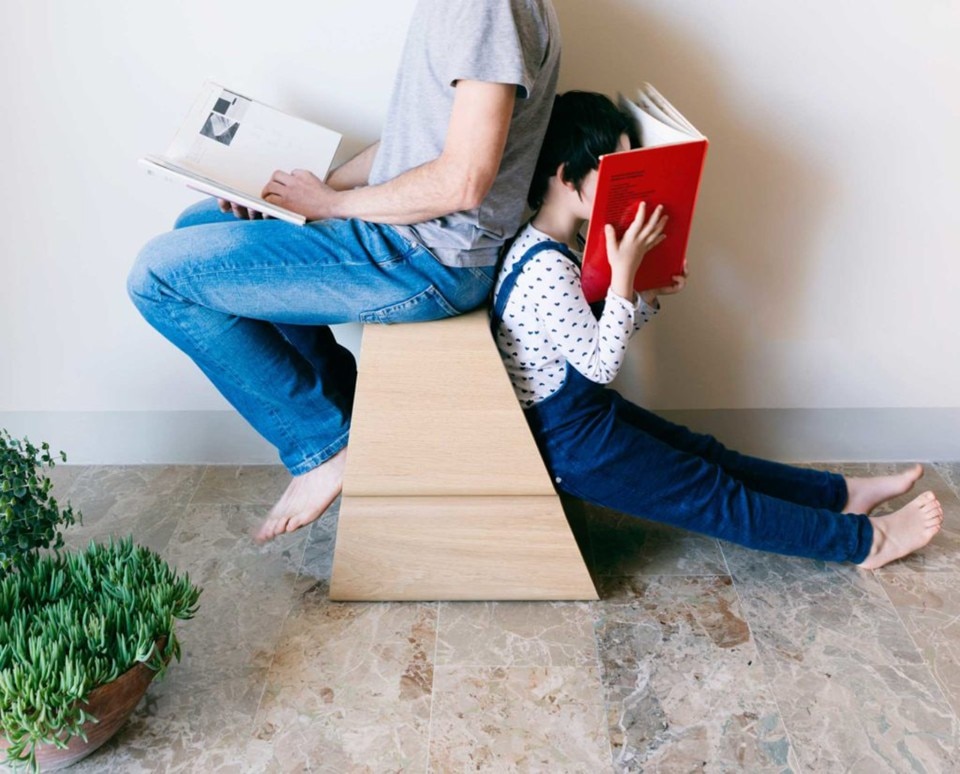
 View gallery
View gallery
A craftsman is known by his tools. Are you a tool obsessive?
I have a lot of affection for my tools, most of all for a nail puller passed down to me by an old shoemaker – it’s useful and unique, and beautiful too. I once thought I’d lost it and I completely panicked.
At one point you won a competition to do a three-month internship with David Savage, one of the greatest of English furniture makers.
The competition I won I’d entered so I could improve my manual techniques. During my time there, I discovered that Savage was in a class by himself in the making of asymmetrical furniture, in bending laminated wood, a technique that I’ve since made my own.
How do Britain and Italy compare?
There’s a different mindset in Britain – it’s in the atmosphere. There’s the chance to become a professional and create your own design line. Then there are opportunities to develop the skills you need to launch yourself on the market and find people who like your line, clients who want unique pieces from you because their taste aligns with your own. In Britain, it’s completely normal for a young person to go into the field. There are publishers focusing on woodworking – books and magazines that explain new machines, how to sharpen your tools, how to maintain your workbench, how to organise your workshop. In Italy, unfortunately, there are only a few glossy magazines for DIY fans.
You’re launching your first line of design products – alongside your restoration work and bespoke carpentry. What’s the idea behind it?
One of the main features is that they blend different materials. I often get inspiration from a pre-existing piece, rather than designing something completely new. My products revolve around the idea of re-use. It’s easy for me to create a lamp out of old glass, a piece of iron and an old light fixture. But above all I’d like my clients to recognise the quality of the materials, understand the technique and appreciate the beauty.


